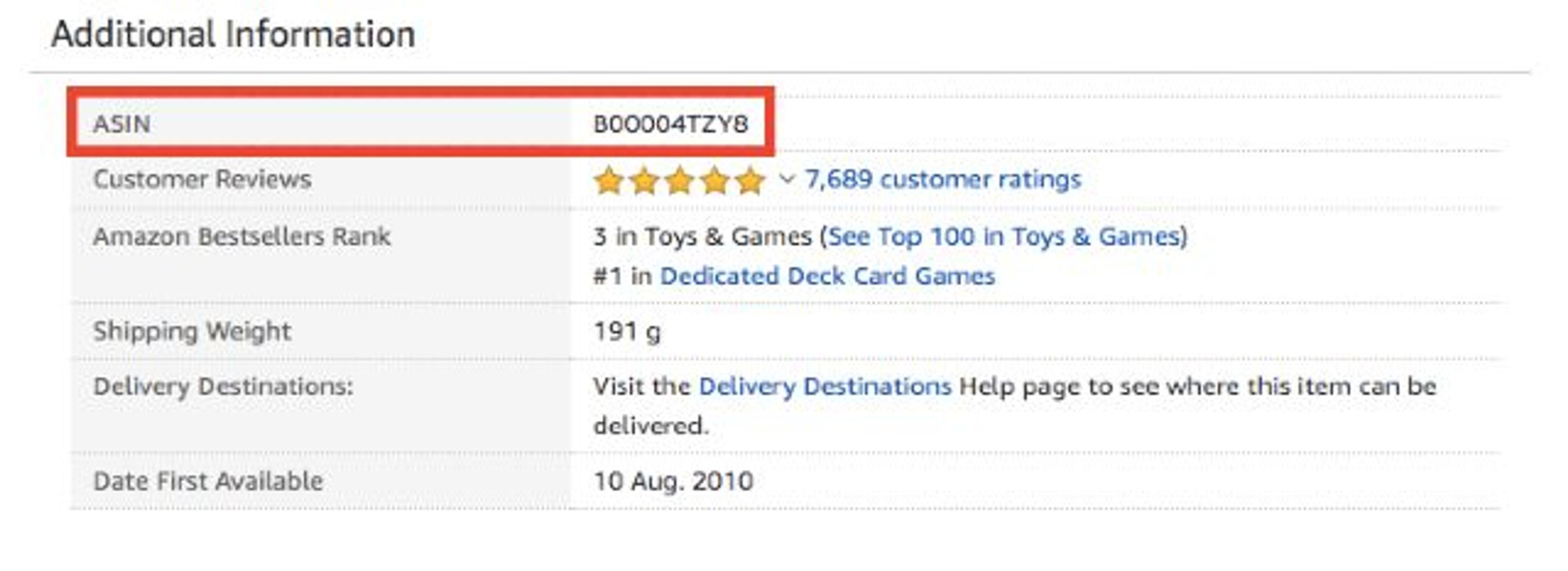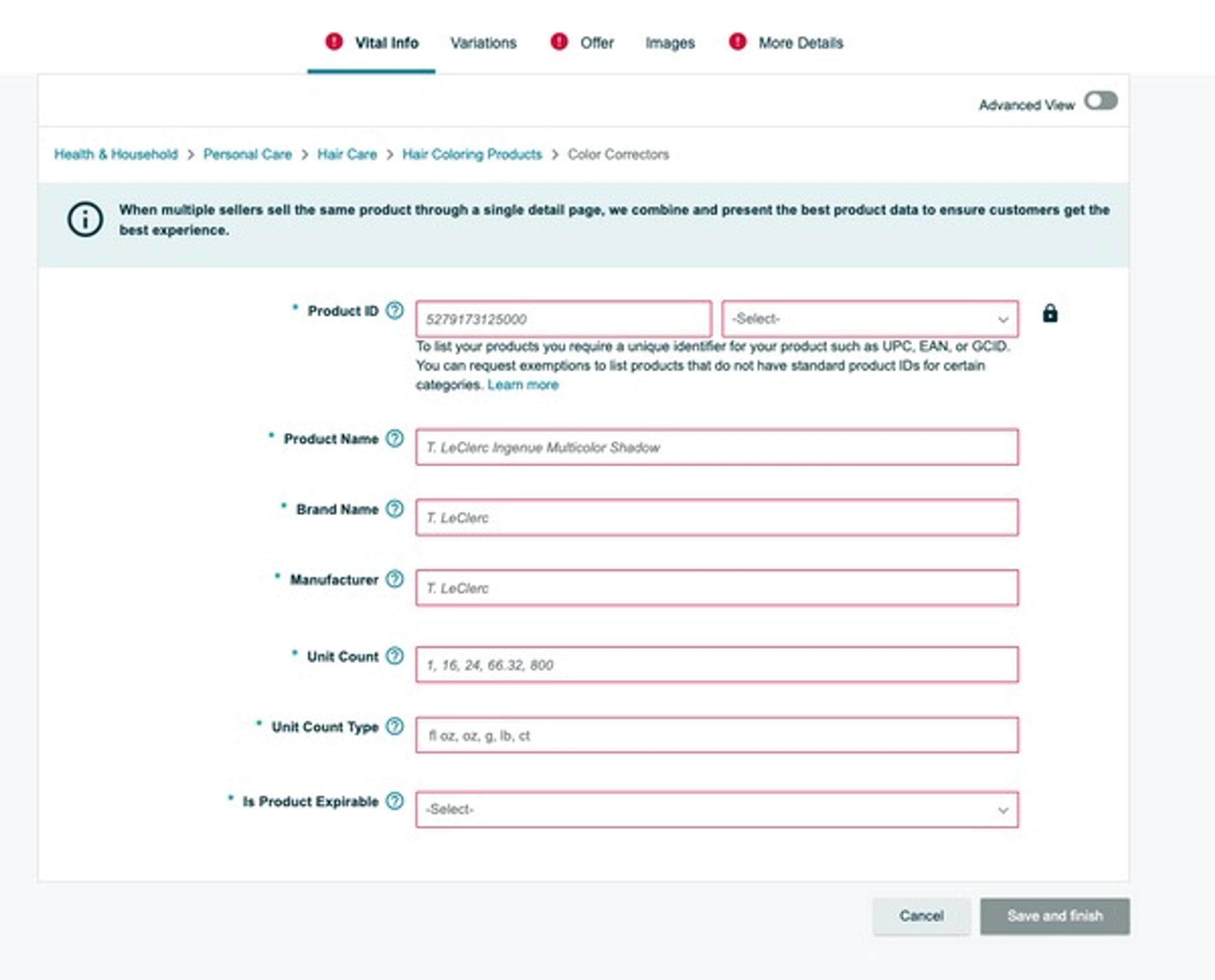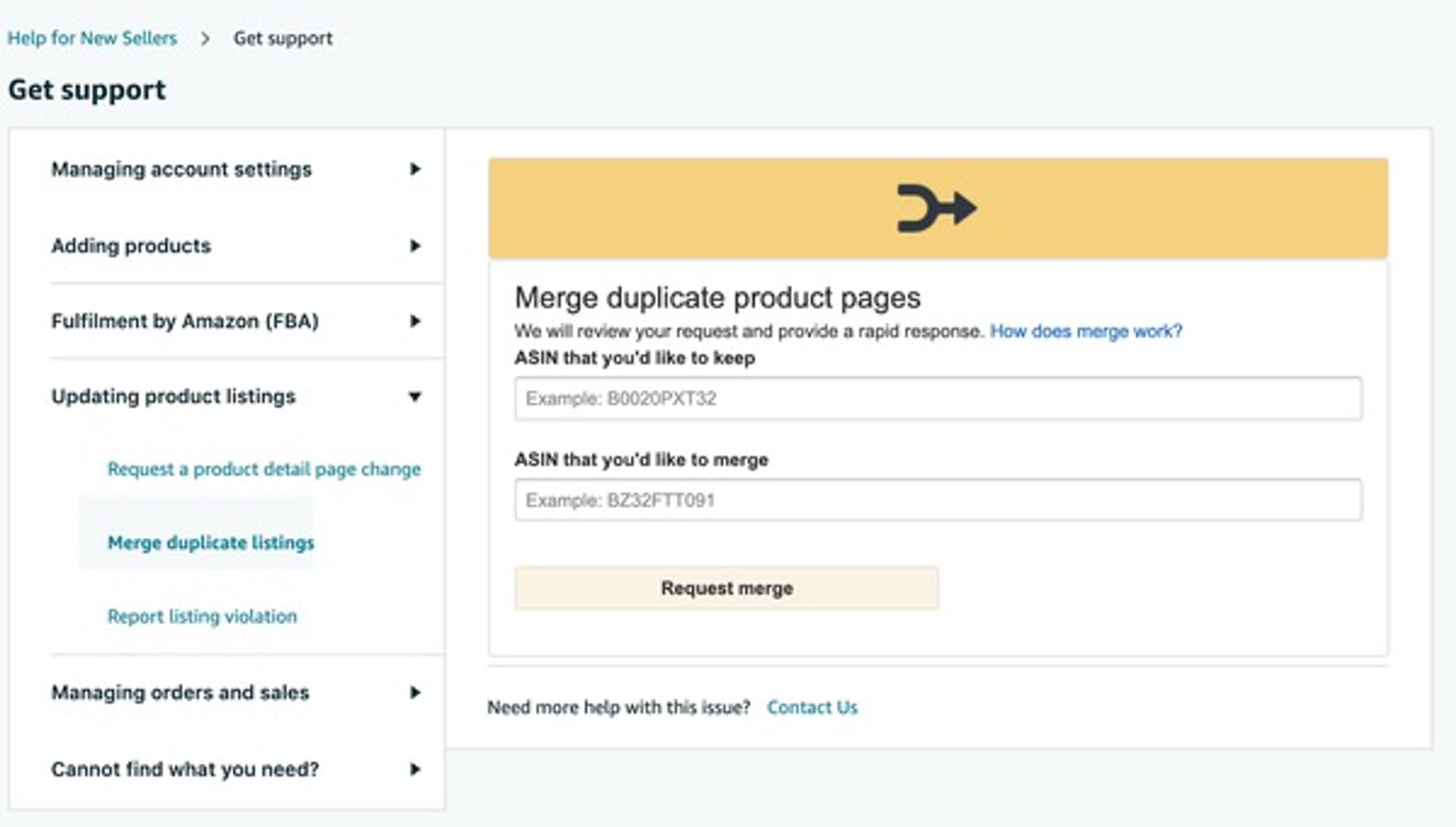/Understanding the ASIN Number on Amazon: How to Create Your Own

Understanding the ASIN Number on Amazon: How to Create Your Own
With more than 350 million products available for sale on Amazon, keeping track of each would be near impossible. Fortunately, a system exists to help with just that: the Amazon ASIN. Each product listed for sale on Amazon.com is assigned an ASIN, which is a ten-digit alphanumeric string assigned by Amazon.
The ASIN carries a lot of responsibility and is the bedrock of Amazon’s catalog management and organization.

What exactly is an Amazon ASIN?
An ASIN, or Amazon Standard Identification Number, is an identifying code assigned to all products on Amazon. An ASIN consists of 10 digits, and will include numbers, letters, or both.
With each product having its own unique ASIN, no two products on Amazon will share the same ASIN. An ASIN is a type of product identifier that is unique to its respective marketplace, so the same product can have multiple ASINs across different marketplaces.
ASINs are used across all Amazon marketplaces, not just for Amazon US. These include Amazon.ca, Amazon.mx, Amazon.co.uk, Amazon.de, Amazon.it, among the rest.
ASINs are essential to all Amazon marketplaces as they serve as a uniform source of truth for inventory management. ASINs and the ISBN number for books are very similar, think of Amazon’s ASIN as the ISBN equivalent for Amazon products.
Do I need a new Amazon ASIN?
Not necessarily. The answer to this will depend on what type of item you are selling, and whether or not an ASIN already exists for it. If you are acquiring your product from a retailer or distributor, it is likely that an ASIN exists within Amazon’s catalog.
It’s also important to note that duplicate product listings sharing the same ASIN will automatically be merged by Amazon.
By searching for existing ASIN numbers using product identifiers like UPC and model numbers, resellers and retailers can avoid duplicate listings and leverage buyer interest in existing products, ultimately enhancing their product visibility and sales potential.
You can use an existing ASIN if:
You won’t need to create a new ASIN for a product if an ASIN already exists in the product details. Before you list your product(s) for sale on Amazon, it’s important to check for an ASIN.
The good news is, if one does already exist, you are free to use that ASIN and list your product using it. By doing so, you’ll be joining other sellers who are also selling the same ASIN.
This is the most common for Amazon sellers, especially those involved in reselling (arbitrage and wholesale) as a retailer.
You'll need to create a new ASIN if:
You will need to create a new ASIN for your product if there is no pre-existing ASIN in Amazon’s catalog. To do this, you will need to create a new product within your Amazon Seller Central account.
Once a new product is created, Amazon will then issue the product a new and unique ASIN. Once the new ASIN is assigned, you will then be able to sell the product under the new listing and ASIN. Creating a new listing and ASIN is typically the route for Amazon sellers involved in private label, new and emerging brands, as well as sellers with exclusive selling rights.
How do I create a new Amazon ASIN?
If you realized that your product does not already exist within the Amazon ecosystem and therefore does require a new ASIN, there are a couple of ways to create a new one.
Before you can do this, your product will need to have a Universal Product Code (UPC), which is most commonly found in the form of a GTIN (Global Trade Item Number). The GTIN can be found directly underneath the product’s barcode, and is required when creating a listing on Amazon. Amazon will then match up the product’s GTIN with its own unique ASIN.
Below are the steps for creating a new listing on Amazon.com, which is required in order to obtain a new ASIN:
Step 1: Log into Seller Central
Step 2: Click on the left-hand menu
Step 3: Click Catalog -> Add Products
Step 4: Click "I'm adding a product not sold on Amazon"
Step 5: Select a product category
Step 6: Complete Amazon's Listing Creation wizard

Once the above steps are completed, a new listing will be created for your product, and Amazon will then assign your product its new and unique ASIN.
Merging Existing ASINs
While Amazon does not allow for multiple ASINs of the same product to exist within the same Amazon marketplace, there are plenty of times when duplicate ASINs will exist for the same product. This can be the result of an accidental oversight, or an intentional act by a seller.
Having multiple ASINs exist for the same product is detrimental to the seller, buyer, and marketplace. Some of the consequences include navigating through duplicate product listings, pricing discrepancies, differences in listing quality, and issues finding the legitimate product detail page.
Fortunately, Amazon Seller Support is equipped to handle such instances, and you may request to merge ASINs by opening a support case.

According to Amazon, “Creating a new ASIN when the product already exists in Amazon’s catalog is prohibited and can result in your ASIN creation or selling privileges being temporarily suspended or permanently removed.
Matching your products to existing products in Amazon’s catalog helps drive a high-quality customer experience. Matching to an existing product instead of creating a duplicate listing allows you to more fully benefit from buyer interest and traffic for that product.”
Understanding Amazon's Product Variation Policy
Often times on Amazon, new sellers face limitations in creating Amazon Standard Identification Numbers (ASINs) for new product listings.
The same product (with the same parent ASIN) will be available in different variations, such as size, color, quantities, or other variations. In the Amazon world, this can also be referred to as the parent-child relationships between products and ASINs.
As such, products and their variants follow a specific structure when organizing their variants. Below are some illustrations from Amazon showing the structure of parent-child relationships:



Conclusion
In the Amazon world, ASINs are the underlying root system of all 350 million products listed for sale. Without ASINs, it would be nearly impossible to maintain proper inventory tracking, sales metrics, marketplace analytics, as well as the ability to easily find favorite products.
When selling on Amazon, it is imperative to ensure all products have an ASIN, and if not, understand what is required when creating one. While often overlooked, an ASIN plays an imperative role in maintaining organization in a marketplace of Amazon's scale.


